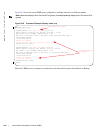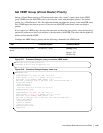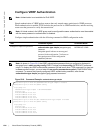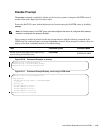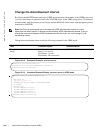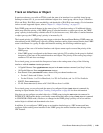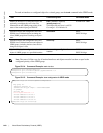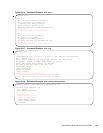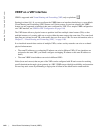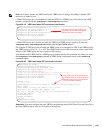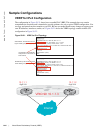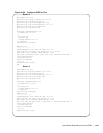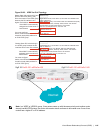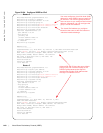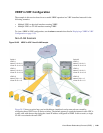1142 | Virtual Router Redundancy Protocol (VRRP)
www.dell.com | support.dell.com
VRRP on a VRF Interface
VRRP is supported with Virtual Routing and Forwarding (VRF) only on platform: e
Starting in release 8.4.1.0, you can configure the VRRP feature on interfaces that belong to a non-default
Virtual Routing and Forwarding (VRF) instance on E-Series routers. In previous releases, the VRRP
feature was not supported on interfaces that were configured for VRF. For a sample VRRP configuration
on a VRF interface, see VRRP in VRF Configuration on page 1149.
The VRF feature allows a physical router to partition itself into multiple virtual routers (VRs) so that
multiple instances of a routing table can co-exist within the same router at the same time. The control and
data plane are isolated in each VR so that traffic does not flow across VRs. For more information, refer to
Chapter 57, “Virtual Routing and Forwarding (VRF),” on page 1109.
In a virtualized network that consists of multiple VRFs, various overlay networks can exist on a shared
physical infrastructure:
• The same IP addresses or overlapping IP subnets can exist in different VRFs. (If two interfaces are
assigned to the same VRF, you cannot configure overlapping IP subnets or the same IP address on
them.)
• The same VRRP virtual address can exist in different VRFs.
Nodes (hosts and servers) that are part of the VRFs can be configured with IP static routes for reaching
specific destinations through a given gateway in a VRF. VRRP can provide high availability and protection
for next-hop static routes by eliminating a single point of failure in the default static routed network.



